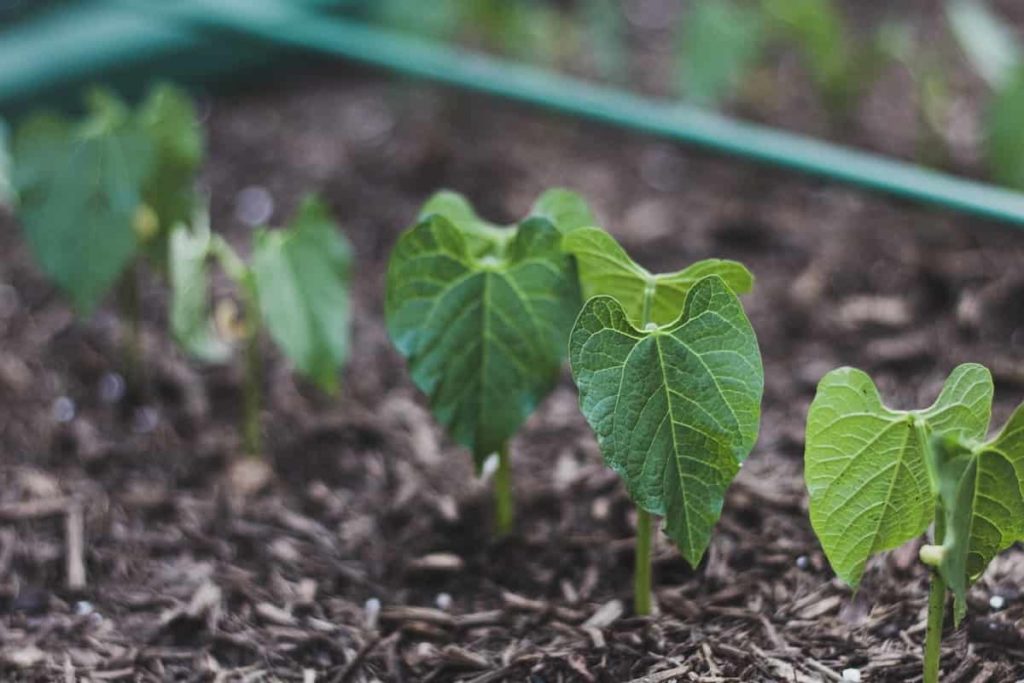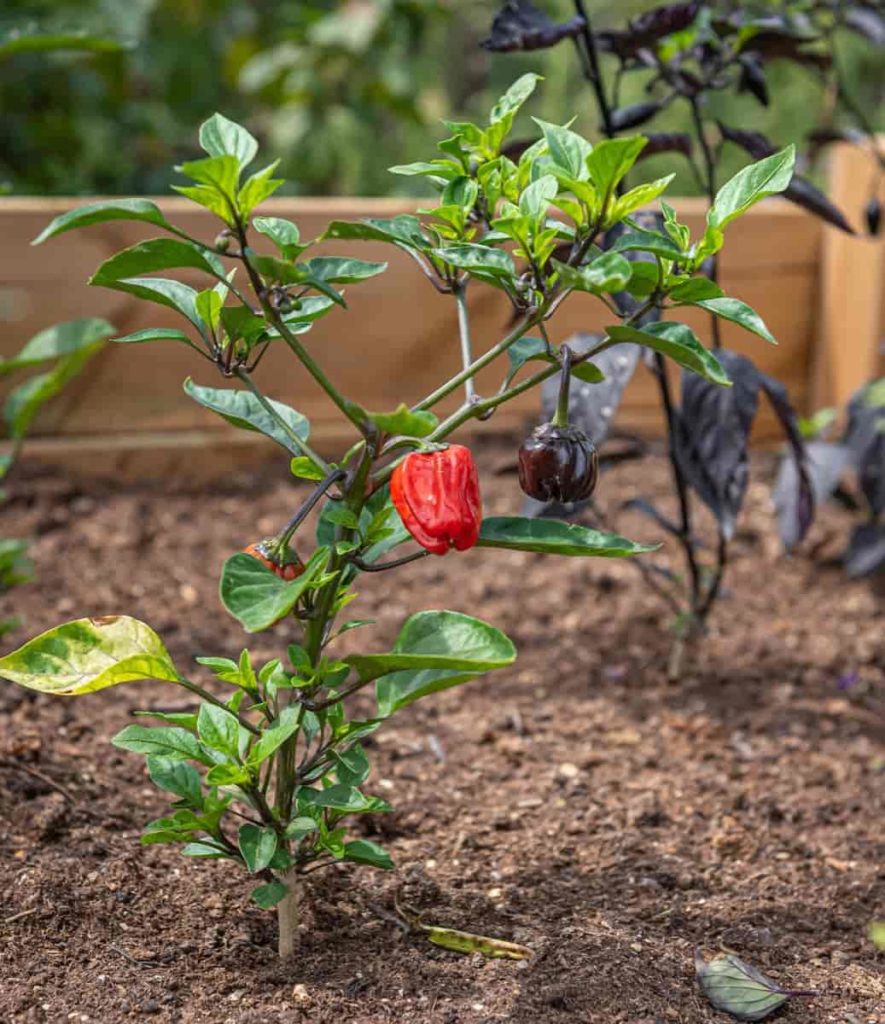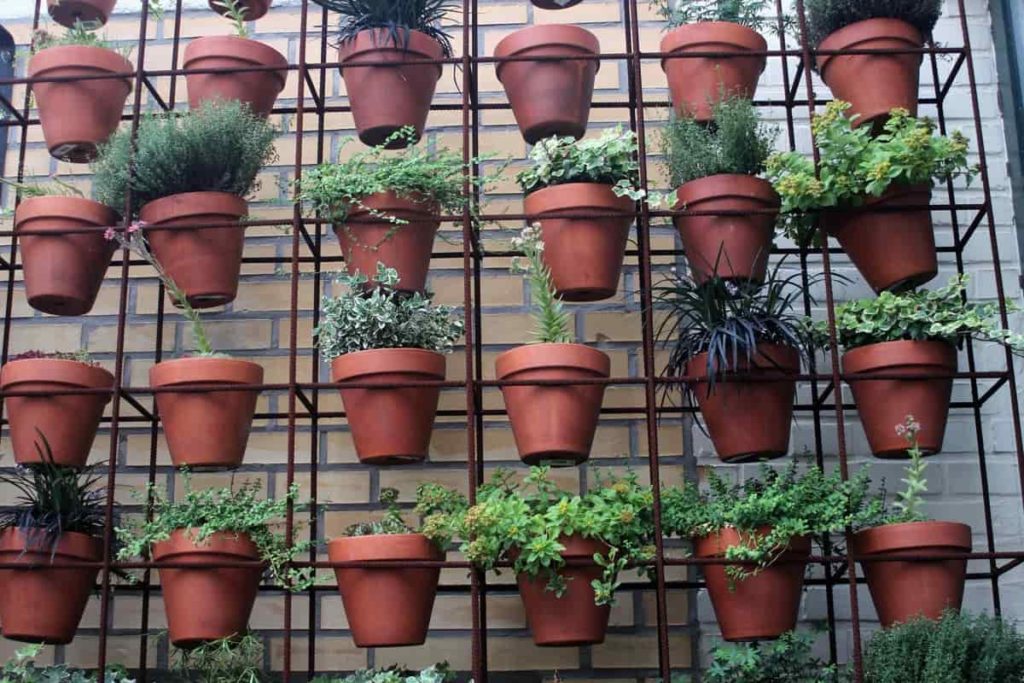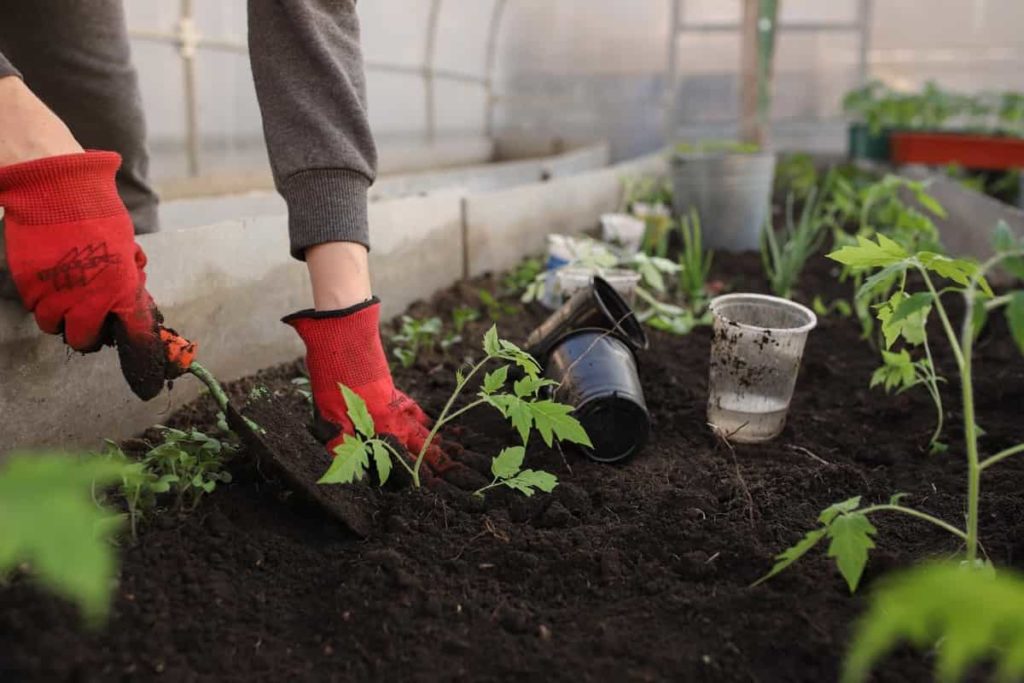The lack of available space in cities and residents’ desire to live in more environmentally friendly settings has contributed to the popularity of gardening on rooftops and terraces. Therefore, open roofs in cities are only natural to serve as locations for growing a healthy and alternative garden. And if you want to utilize your patio for something productive, why not try growing some of your healthy food?

This article is a comprehensive introduction to urban organic terrace gardening for those without prior experience. Rooftops exposed to the sun in urban areas might add to the overall rise in surface temperature. Growing crops above your home may decrease the average temperature inside your dwelling by seven percentage points. Home composting, for example, is a technique that would significantly reduce the amount of trash sent to landfills daily if more people did it.
When you grow your food, not only can you cut down on your total water use, but you can also utilize the rainwater that you’ve collected. The concern about the use of pesticides in commercially grown food has contributed to the rise in popularity of urban farming throughout the world, even though various cities’ gardening practices will need to be tailored to the local climate. Below we will learn terrace gardening and a step-by-step guide to starting an urban organic container gardening.
Steps to start an urban organic terrace gardening
First, select the ideal location for your organic terrace garden
Your kitchen garden might get its start on windowsills, balconies, or other small spaces. These locations are convenient in terms of usage, access, and upkeep for organic terrace gardening. However, putting up a garden on the terrace will require much work. But if it is completed in stages, even this challenge may be overcome with relative ease. Make sure that there is at least three to four hours of direct sunshine reaching the location every day, regardless of where it is.
In case you missed it: Easy Vegetables to Grow at Home in India: For Pots, Balcony, Indoors, Terrace, and Backyard

Without exposure to light, plants are unable to survive and produce fruit. Ensure that the drainage on your balcony and patio is functioning correctly. You are in excellent shape if it rains and the rainwater is immediately drained via the drainage holes. Your patio won’t need additional waterproofing if you want to engage in container gardening. The soil covering your patio necessitates the use of a waterproofing solution.
Plan your organic terrace garden
You can determine which areas of the designated space get full sunshine (eight to ten hours per day) and which areas receive just partial sunlight by studying the patterns of sunlight and shadow in those areas (2-5 hours a day). It is possible to design the placement of plants according to the amount of sunshine each plant requires. In addition, there is a requirement to designate space for the operation of a nursery, composting and waste management, storage, and a work area.
Trellis structures are necessary for plants that climb and creep. It will save a lot of work later on if you install them early on. It is essential that the positioning of containers, soil beds, and other elements be carefully planned so that every container and every area of the bed can be reached without difficulty. There should never be a situation in which one must seek out them. Additionally, the placement of plants on the terrace has to be designed with consideration for the topography of the area.
For instance, the terrace could have a little dip, in which a negligible quantity of water logging might occur. Having beds made of direct soil in these settings is an invitation for disaster. On the other hand, a makeshift platform made of bricks and plywood can be constructed, and shipping containers can be positioned on it. It is essential to sketch out your design first. It doesn’t need to have an appealing appearance. Nevertheless, it needs to have a nice and practical design. Therefore, you should proceed to draw it out.
In case you missed it: How to Make a Greenhouse on Terrace: Mini/Small Greenhouse Ideas, and Tips
Waterproof your organic terrace garden
Checking for waterproofing on your terrace should be one of your first steps before creating an organic terrace garden. It’s best to cover the whole terrace floor with a heavy tarp if you’re doing it yourself. There is also the option of hiring specialists to assist you with waterproofing your patio. Also, make sure that the base you’re using is sturdy enough to support the weight of the pots. Suppose your home was constructed by trained experts using the appropriate mixture of sand and cement.
In that case, there should be no difficulty with it being able to handle the additional weight in the vast majority of instances. If the thought of using tarpaulins makes you uncomfortable, you can purchase pot saucers, which are designed to collect any excess water left after pots have been drained. In any case, you need to ensure that you have a solid strategy for waterproofing your patio.
Be careful while choosing the soil for your terrace garden
Growing robust and healthy plants start with soil that has been prepared, conditioned, and fed appropriately. Not only can it chemically treat soil infiltration into the food chain, but it also has the potential to damage and kill beneficial bacteria, worms, and other microorganisms that are present in the soil.
Find a reputable place from which you may purchase soil and go there. Most nurseries provide well-nourished sale soil that combines regular soil, vermicompost, and compost coir; this soil may be rather pricey. If you want a less expensive alternative, you may produce your CST and mix the soil on your own using some of the materials you purchase.
Buy the containers for organic terrace gardening
When it comes to arranging your plants, containers are essential. Using old paint boxes, wooden crates, or plastic bottles is an excellent way to save money. Many people choose to steer clear of plastic containers since they are prone to melting in the hot heat and for a variety of other apparent reasons. Alternatively, you might use clay pots, UV-treated grows bags, cement pots, etc.
In case you missed it: How to Make Money from Terrace Gardening?

Specific climbing and blooming plants will look beautiful in hanging pots; this is something else to consider. It doesn’t matter what kind of containers you use; each one has to have a hole in the bottom so that any more water you pour over the plants can escape. However, to stop the soil from eroding further, this little hole has to be covered with a piece of flat stone about the size of a quarter.
Buy the seeds required
To successfully grow your vegetables, you will want seeds of a high grade. Tomatoes, lady’s fingers, and bitter gourd are typical vegetables to use as a starting point. You may obtain seeds from local nurseries located all over the place, or you can get them from the fruits and vegetables you buy at the local market. You might also ask your neighbors for some seeds and saplings if they are the type of people that are always willing to help.
Start planting the seeds in containers
You may determine which areas of the designated space get full sunshine (eight to ten hours per day) and which areas receive just partial sunlight by studying the patterns of sunlight and shadow in those areas. It is possible to design the placement of plants according to the amount of sunshine each plant requires. In addition, there is a requirement to designate space for the operation of a nursery, composting and waste management, storage, and a work area.
Trellis structures are necessary for plants that climb and creep. It will save a lot of work later on if you install them early on. It is essential that the positioning of containers, soil beds, and other elements be carefully planned so that every container and every area of the bed can be reached without difficulty. There should never be a situation in which one must seek out them.
Additionally, the placement of plants on the terrace has to be designed with consideration for the topography of the area. For instance, the terrace could have a little dip, in which a negligible quantity of water logging might occur. On the other hand, having beds made of direct soil in these settings is a recipe for disaster.
On the other hand, a makeshift platform made of bricks and plywood can be constructed, and shipping containers can be positioned on it. It is essential to sketch out your design first. It doesn’t need to have an appealing appearance. Nevertheless, it needs to have a nice and practical design. Therefore, you should proceed to draw it out.
In case you missed it: Gardening Basics for Beginners: For Pots, Terrace, Balcony, and Backyard

Start watering your organic terrace garden
When managing resources, a terrace garden’s water supply is the mol. The plants have a daily need for access to sufficient amounts of water. Consideration should also be given to the management of one’s household wastewater. It is possible to rinse the plants using the water to wash the veggies. To reduce water use and save money, you should consider installing a rainwater collection system.
During your time away on vacation, you will need to make arrangements to ensure that your plants get the appropriate amount of water. This issue can be remedied with the use of drip watering systems that are homemade. To begin, we recommend that you make things as simple as possible on your terrace garden.
Protect your organic terrace garden with wind barriers (if possible)
Winds blowing at high speeds may be one of the most challenging aspects of maintaining a terrace garden because they have the potential to damage young shoots and plants with delicate stems. If you have sufficient money, you may safeguard your plants by erecting a sturdy wind barrier or fence around them. Garden shades are wonderful, but for them to support the plants, they need to be securely clamped to the roof floor.
Start composting
Our organic gardening endeavors aim to create a home environment that generates no wasted food. Because of this, you must install a waste management system in your house. Composting your garbage may be done with something as basic as a bucket or as complex as a composting bag. Be careful to prepare ahead for a location for composting that is shielded from rain and direct sunshine. It’s also a good idea to look into several home composting systems that are simple to use. Composting is also made much simpler since they do not need much room.
In case you missed it: How to Start a Terrace Garden from Scratch: A Beginner’s Guide

Use natural pesticides for your terrace plants
No matter what pest control measures you take, unwanted visitors will still be a problem in your landscape. And the most effective method for combating them is to use pesticides; however, not the harmful chemical pesticides sold in stores, but rather the natural pesticides that can be made at home. A plant can be protected against fungal diseases by spraying it with baking soda, cooking oil, and water. Slugs can be easily distracted with beer, while aphids have difficulty dealing with neem oil.
Keep track of all the records
The failure to make a record of all of the work that is being done and all of the observations that are being made is one of the things that many people who try their hand at gardening fail to accomplish. From the moment of germination until the time of harvest, a plant is subject to the influence of many elements. And many of them can’t be controlled and differ from one location to the next.
Therefore, you should make it a point to keep a record of your observations. To make this task simpler and more organized, you should create templates and assign numbers to each pot. Your experiences and observations in the kitchen garden will be the most valuable education you could get.
Devote some time to your terrace garden daily
Get ready to devote at least an hour of your time each day to taking care of the garden on your terrace. When everything is configured correctly and running well, you will have less time to spend working and more time to reap the advantages. If you can’t devote a whole hour to it at once, dividing it into halves—30 minutes in the morning and 30 minutes in the evening—should work just as well.
Conclusion
Like everything else in life, success and failure are inextricably linked in the practice of urban organic terrace gardening. At first, you’ll have setbacks: you’ll either overwater or underwater your plants, apply too much manure, or watch the mealy bugs feast on your prized plant. Don’t let your past mistakes get you down. If you are willing to admit and learn from your errors, you will be well on your way to growing a garden that will envy your neighbors. It takes time for a tree to start producing fruit.
There is always a chance that seeds may fail to germinate. Insects may eliminate an entire day’s worth of labor for you overnight. And there are situations when you could accidentally shatter a container housing a fully established plant. When this happens, it will seem like the sky is falling on top of you. But you shouldn’t give up hope. Gain wisdom from your past errors. Keep still and let nature work its magic.
- Broccoli Seed Germination and Selection
- Asparagus Seed Germination and Variety Selection
- Seasonal Flower Gardening: Best Practices for Spring, Summer, Fall, and Winter
- How to Grow Hibiscus from Flower
- Plantation Ideas for Home Decoration: A Beginners Guide
- Flower Garden Designs and Layouts for Beginners
- Planting and Spacing Techniques in Papaya: A Beginner’s Guide
- Growing Gold: Essential Techniques for Planting Pineapples
- How to Make Kalanchoe Plant Bushy: Home Remedies and Solutions
- 11 Reasons Why Your Gardenia is Not Blooming: Home Remedies and Solutions
- Eco Elegance: The Guide to Designing a Drought-Tolerant Landscape
- Gardening on a Slope: Strategies for Hillside Landscaping
- Nourish and Flourish: Top Organic Mulches for Thriving House Plants
- Everything You Want to Know about Indian Mogra Flower: Discover Uses and Growing
- Green Thumb Success: Expert Tips for Cultivating Greenhouse Pumpkins All Year Round
- Maximize Growth & Flavor: The Ultimate Guide to Companion Planting in Herb Gardens
- How to Control Rhododendron Problems Naturally: Home Remedies and Organic Ways to Fix Them
- Natural Magic: The Remarkable Benefits of Cinnamon for Plants
- Best Steps to Revive Dying Tulip with Natural and Organic Treatment
- 10 Reasons Why Your Angel Trumpet is Not Blooming: Remedies and Treatment
- How to Fix Periwinkle Leaf and Flower-Related Problems: Natural Remedies and Solutions
- How to Fix Zinnias Leaf and Flower Problems: Discover Natural and Home Remedies
- Organic Steps to Induce Lemon Tree Flowers: A Comprehensive Guide
- Bloom Booster: Crafting the Perfect Homemade Bougainvillea Fertilizer
- Optimizing Growth: A Guide to Applying NPK Fertilizer for Potted Plants
- 10 Best Homemade Fertilizers for Rubber Plant: DIY Recipes and Application Method
- How to Boost Female Pumpkin Flowers: Effective Steps for More Flowers and High Yields
- Transform Your Indoor Garden: Top Benefits of Pink Salt for Houseplants
- 10 Best Homemade Fertilizers for Peacock Plants (Calathea): Easy DIY Guide
- Unlock Blooms: 9 Reasons Why Your Potted Chrysanthemum is Not Blooming
- 8 Reasons Why Your Potted Hibiscus is Not Blooming: Fix it with Simple Solutions
- Unlock Blooms: 9 Key Reasons Your Potted Frangipani Won’t Flower
- 10 Reasons Why Is My Ice Plant Not Blooming: Remedies and Treatment
- 10 Reasons Why My Potted Hydrangea Not Blooming: Treatment and Remedies
- 10 Reasons Why is My Wisteria Not Blooming: Remedies and Treatment
- 10 Reasons Why is My Goldfish Plant Not Blooming: Remedies and Treatment
